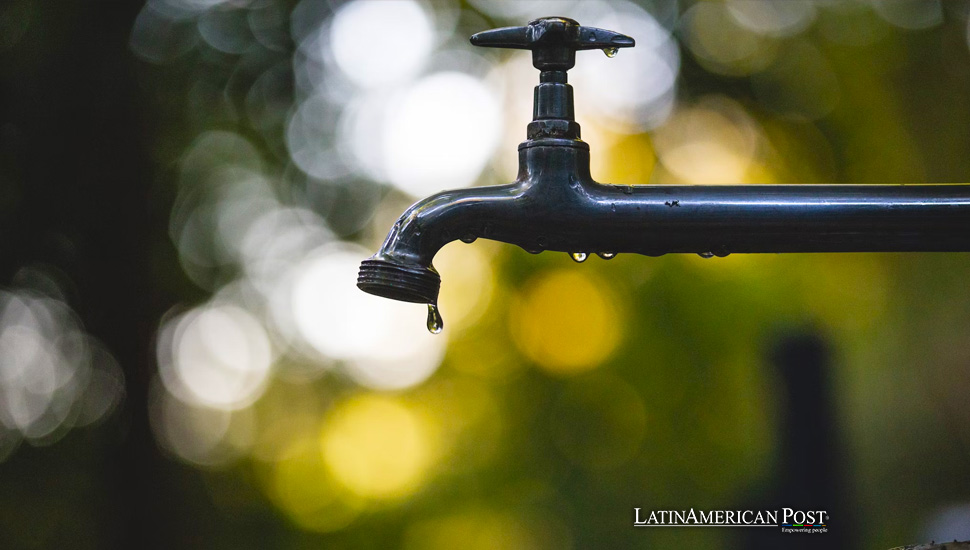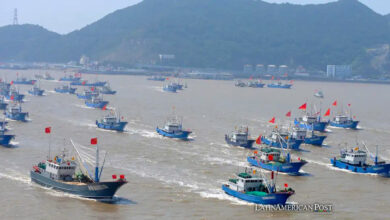Mexico City Faces Historic Water Crisis Amid Climate Change and Urban Challenges

Mexico City confronts severe water shortages as millions grapple with the impacts of climate change, unchecked urban expansion, and aging infrastructure. With the Cutzamala System under unprecedented strain, officials urge conservation. Residents, from the outskirts to city neighborhoods, are in distress, marking a critical moment for Latin America’s megacity in its fight against environmental and logistical water supply challenges.
A City on the Brink
In the sprawling urban expanse of Mexico City, a crisis simmers, threatening the daily lives of its 21 million inhabitants. The megacity, one of Latin America’s largest and most vibrant centers, faces an unprecedented challenge: severe water shortages that have frustrated residents. Weeks of protests and public outcry underscore the gravity of the situation, with the Mexican capital’s reliance on a strained water supply system reaching a critical tipping point.
The issue’s core lies in the Cutzamala System, a complex network of pumping stations, dams, and reservoirs that serves as a lifeline, providing water to approximately 6 million people in the city. Officials from Mexico City’s water utility, SACMEX, have sounded the alarm, declaring the system under the most stress it has ever experienced. This alarming situation is the culmination of years of low rainfall, a phenomenon that experts attribute to the broader impacts of climate change, coupled with chaotic urban growth and a reliance on outdated infrastructure.
The stark reality of the water crisis is felt most acutely by the city’s residents, from the outskirts to the bustling neighborhoods. In Acambay, a community about 80 miles outside the capital, tensions boiled over as protesters forced their way into an office of Mexico’s National Water Commission (Conagua), venting their frustration through vandalism. This dramatic action highlights the desperation and anger felt by many who view the government’s response to the water crisis as inadequate.
Daily Struggle in Azcapotzalco
Meanwhile, in the Azcapotzalco neighborhood of Mexico City, the day-to-day struggle for water paints a vivid picture of the crisis. Armed with buckets and trashcans, residents queue up to collect water from trucks—a makeshift solution to a problem that demands comprehensive and long-term strategies. This scene, replicated across various parts of the city, underscores the urgent need for solutions that address both immediate needs and the underlying causes of the crisis.
The challenges facing Mexico City are complex and multifaceted. Situated in a high-altitude valley and built on the remains of a former lakebed, the city has historically grappled with water supply issues. Most of its water is sourced from an underground aquifer and reservoirs outside the city limits; a system now stretched to its limits.
Climate Change and Urban Expansion
Climate change looms large over the crisis, with scientists pointing to decreased rainfall over the years as a significant contributing factor. However, the problem is exacerbated by human activity, including rapid and often unregulated urban expansion, which has placed additional pressure on the city’s water resources. The sprawling growth of the metropolis has increased water demand. Still, it has also led to the degradation of natural water catchment areas, further diminishing the city’s ability to replenish its supplies.
The aging infrastructure, much of which dates back decades, is another critical issue. Leakage and inefficiencies in the distribution network result in significant water loss, a problem that SACMEX and other authorities need help to address amidst budgetary and logistical constraints. The situation is a stark reminder of the importance of investing in modern, resilient infrastructure to mitigate the impacts of environmental challenges.
In response to the crisis, city officials have called on residents to change their water usage habits, urging conservation as a vital step toward alleviating the strain on the system. While such measures are necessary, they are a temporary solution to a problem requiring a more holistic approach.
The water crisis in Mexico City is emblematic of a broader challenge facing urban centers worldwide as they confront climate change and urbanization. It raises critical questions about sustainability, resource management, and the capacity of cities to adapt to an increasingly unpredictable environmental landscape.
To address the crisis, a multi-pronged strategy is essential. This includes significant investment in upgrading and expanding the city’s water infrastructure, implementing rainwater harvesting and water recycling programs, and enforcing regulations to control urban expansion and protect natural water sources. Moreover, there is a pressing need for public education campaigns to raise awareness about water conservation and to foster a culture of sustainability among the city’s residents.
International Collaboration
The international community also has a role to play, providing technical expertise, financial support, and sharing best practices in urban water management. Collaboration between governments, non-governmental organizations, the private sector, and local communities will be critical in crafting innovative solutions to ensure the long-term water security of Mexico City and other urban areas facing similar challenges.
As Mexico City grapples with its water crisis, the situation serves as a stark reminder of the fragility of our urban ecosystems and the need for concerted action to safeguard our most precious resource: water. The path forward will undoubtedly be challenging, requiring technical solutions and a collective will to envision and implement a sustainable future.
Also read: Colombia in a Fiery Crisis as El Niño Ignites Widespread Wildfires
Ultimately, the water crisis in Mexico City is more than just a logistical or environmental issue; it is a call to action—a reminder of the urgent need to rethink our relationship with the natural world and our approach to urban development. As the city seeks to navigate through these troubled waters, the resilience and ingenuity of its people, coupled with decisive leadership and international support, will be vital in turning the tide toward a more sustainable and water-secure future.





